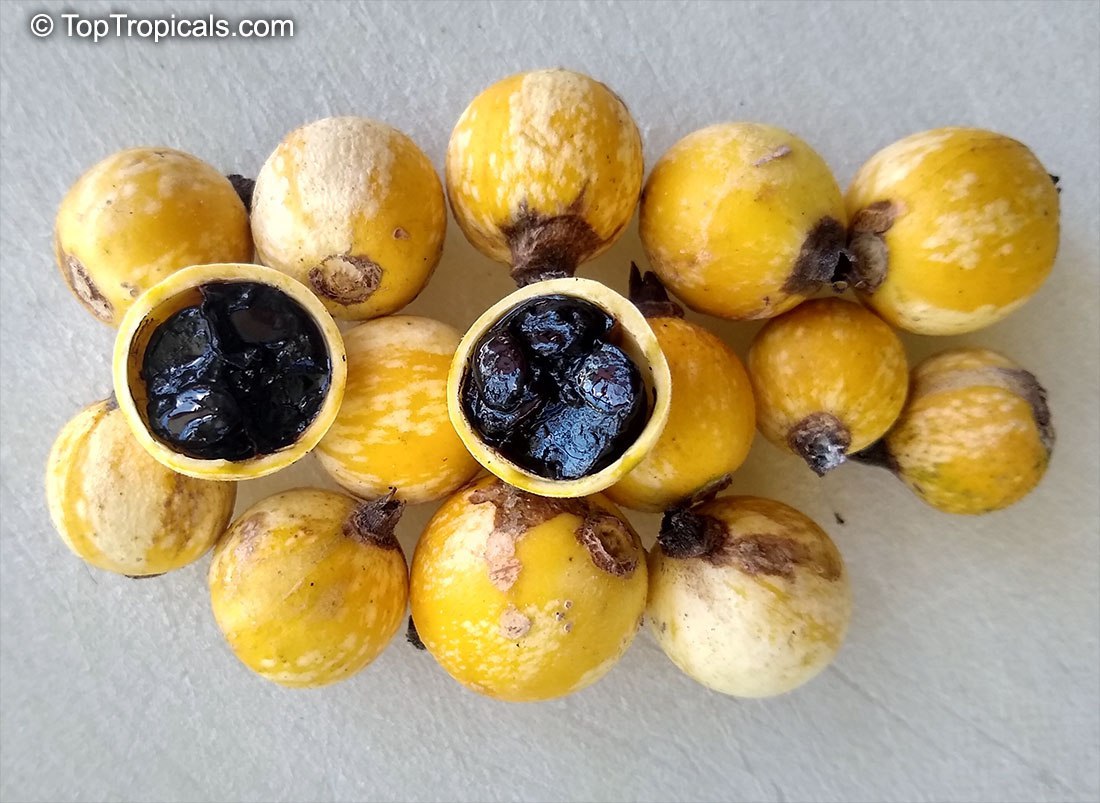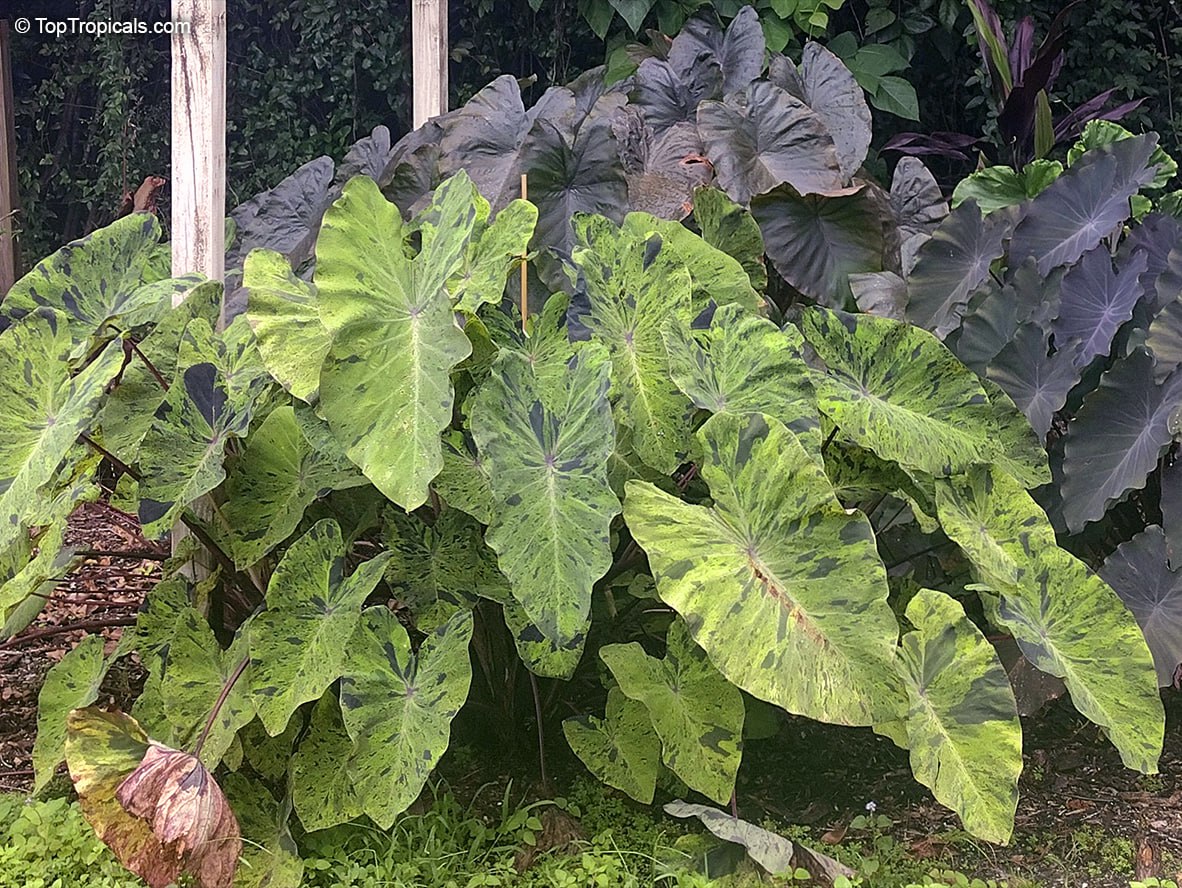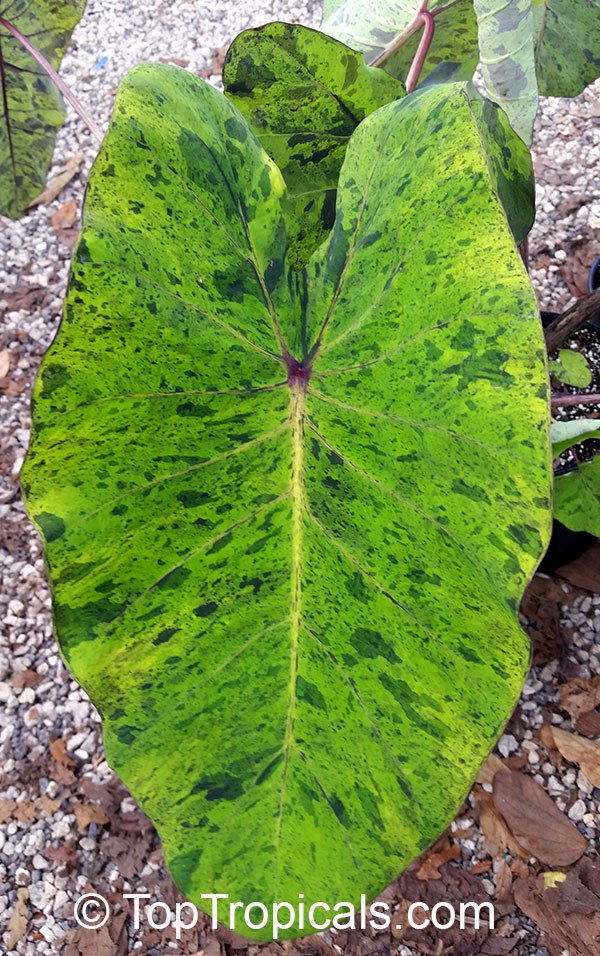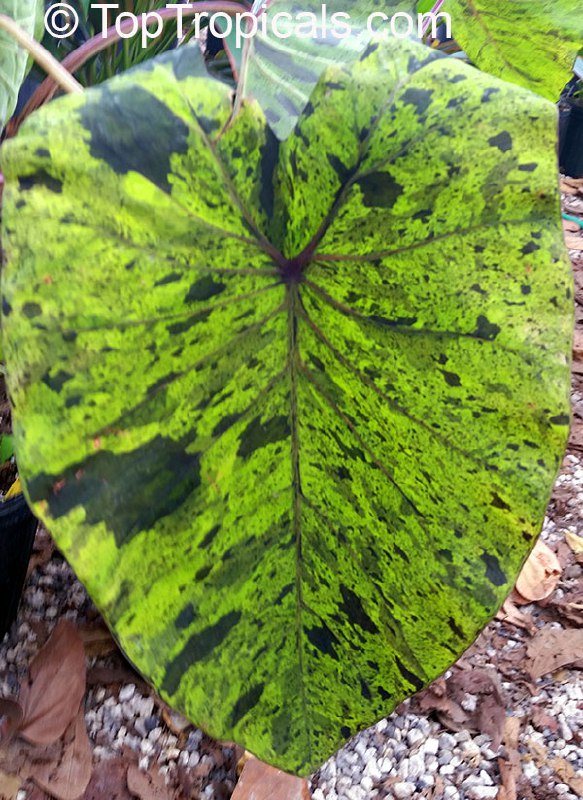Garden Blog - Top Tropicals
What is the most beautiful ginger? 5 most spectacular Ginger species
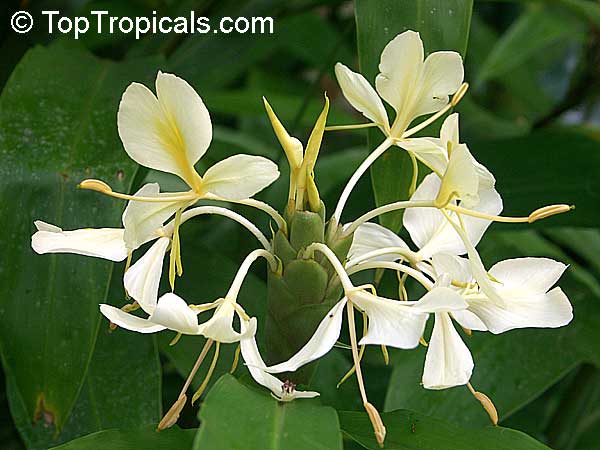
Hedychium flavum x coronarium - Yellow Butterfly Ginger
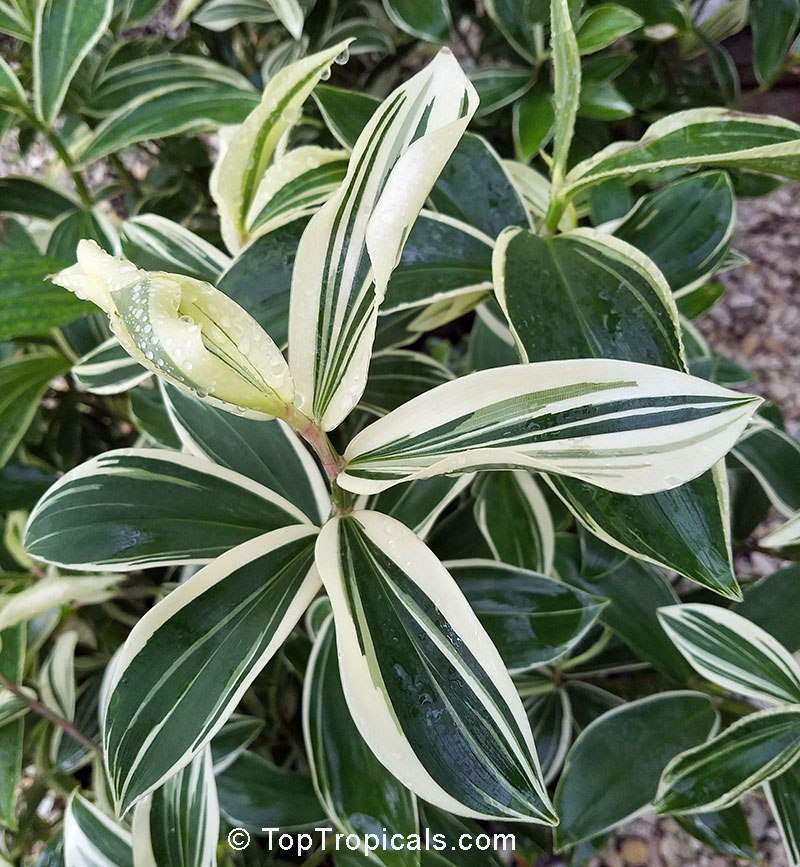
Costus arabicus (amazonicus) variegata - Variegated Spiral Ginger
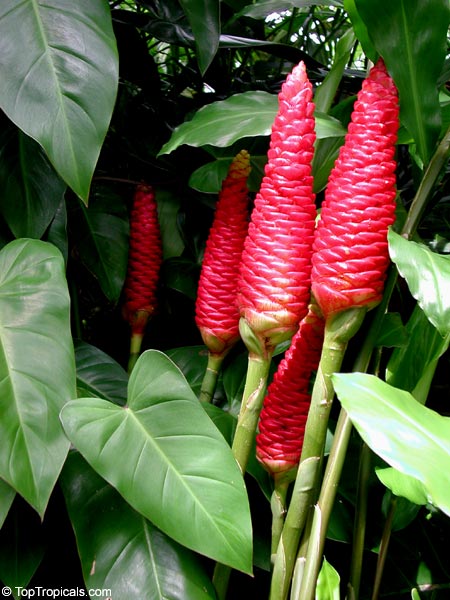
Zingiber Zerumbet - Pine Cone Ginger, Shampoo Ginger
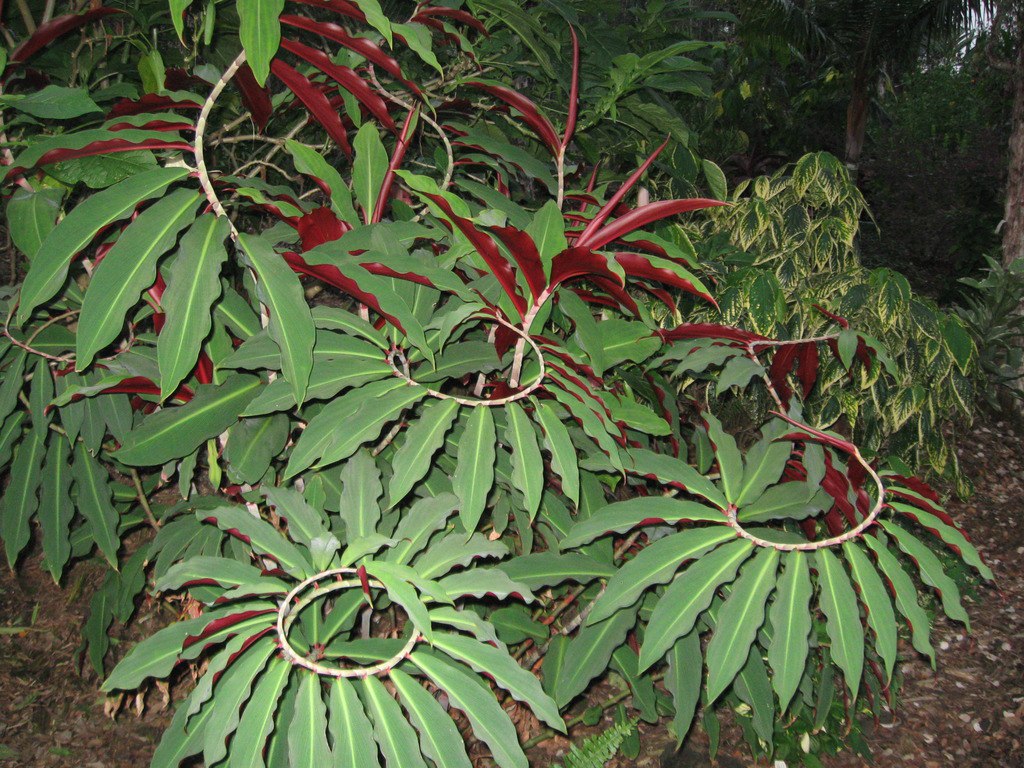
Costus vargasii - Spiral Ginger Raspberry Yogurt

Costus fissiligulatus - African Princess, Cameroon Costus
Ginger is famous for its culinary and medicinal uses, and many species are also strikingly beautiful, making them perfect centerpieces for tropical gardens or potted plant collections, especially in shaded spots. Here are a few of our favorite cultivars.
- 🍭 Hedychium flavum x coronarium - Yellow Butterfly Ginger, Nardo Ginger Lily - rare hybrid of White Butterfly ginger we mentioned earlier, it is more vigorous and tall than its parent. With attractive long green leaves with a slight fuzziness, this ginger has open long spikes of pastel yellow flowers with a beautiful heady aroma. Exquisitely fragrant!
- 🍭 Costus arabicus (amazonicus) variegata - Variegated Spiral Ginger - is a show stopper! Very popular in Hawaii and Florida. Spiraling stems rise with a strong white variegation and topped with green and white cone like flowers. Vigorous grower, it prefers shade, moist soil and lots of water.
- 🍭 Zingiber Zerumbet - Pine Cone Ginger, Shampoo Ginger - is probably the most popular one. All parts of this ginger are spicy fragrant. The cone shaped flowers are long lasting and useful for cut flower arrangements. It is in fact used as a shampoo in Asia and Hawaii, and as an ingredient in several commercial shampoos! Pinecone ginger is considered a "canoe plant", that is, a plant introduced throughout the Pacific by the ancient Polynesian settlers.
- 🍭 Costus vargasii - Spiral Ginger Raspberry Yogurt - The name refers to the colorful raspberry colored stem, but that's not the only colorful thing about it: the leaves are dark green, long and glossy with velvety deep purple undersides. The inflorescence is a vivid red with tight bracts and bold yellow flowers. The butterflies love to drink the nectar from the flowers. Large vigorous ginger, growing up to 5-6 ft tall.
- 🍭 Costus fissiligulatus - African Princess, Cameroon Costus - from Gabon in West Africa. It has a dazzling pink trumpet flower with a yellow throat. It is very floriferous with an inflorescence of numerous flower buds on a shortish plant of 3-4 ft that stands very erect. It is an easy grower
📚 More gingers in previous posts:
Alpinia formosana x zerumbet Variegata - Variegated Ginger
Costus spicatus x woodsonii - Red Button Ginger, French Kiss
Hedychium coronarium - Butterfly Ginger
Kaempferia angustifolia - Laos Silver Stripe
❔ What is your favorite Ginger? Share in comments👇
🛒 Shop Gingers
#Shade_Garden #Container_Garden #Food_Forest
🏵 TopTropicals
Where does Blackberry Jam come from? It comes from Gardenia!
Randia formosa - Blackberry Jam Fruit, Jasmin de Rosa is a curious small evergreen tree from South America that combines features of a fragrant flower and delicious dessert fruit which tastes like fresh Blackberry jam. Fragrant white flowers are similar to Gardenia.
This relatively hardy tropical can be grown in a container as well as in the ground. It's very сompact (4-5 ft), perfect for container culture, will fruit in a container.
Kids love the fruit! Many claim that it is even better than Blackberry preserves.
Large tubular white flowers attract nocturnal moths. Since the plant is closely related to the gardenia (Rubiaceae plant family), its flowers are sweetly fragrant.
Produces as many as 25-30 fruits at a time. Since it blooms for a few months from Summer through Winter, fruiting and flowering can be enjoyed even when other plants are dormant.
Article about Blackberry Jam Fruit formosa
Order Blackberry Jam tree
#Food_Forest #Container_Garden
🏵 TopTropicals
Why everyone wants the Sugar Apple?
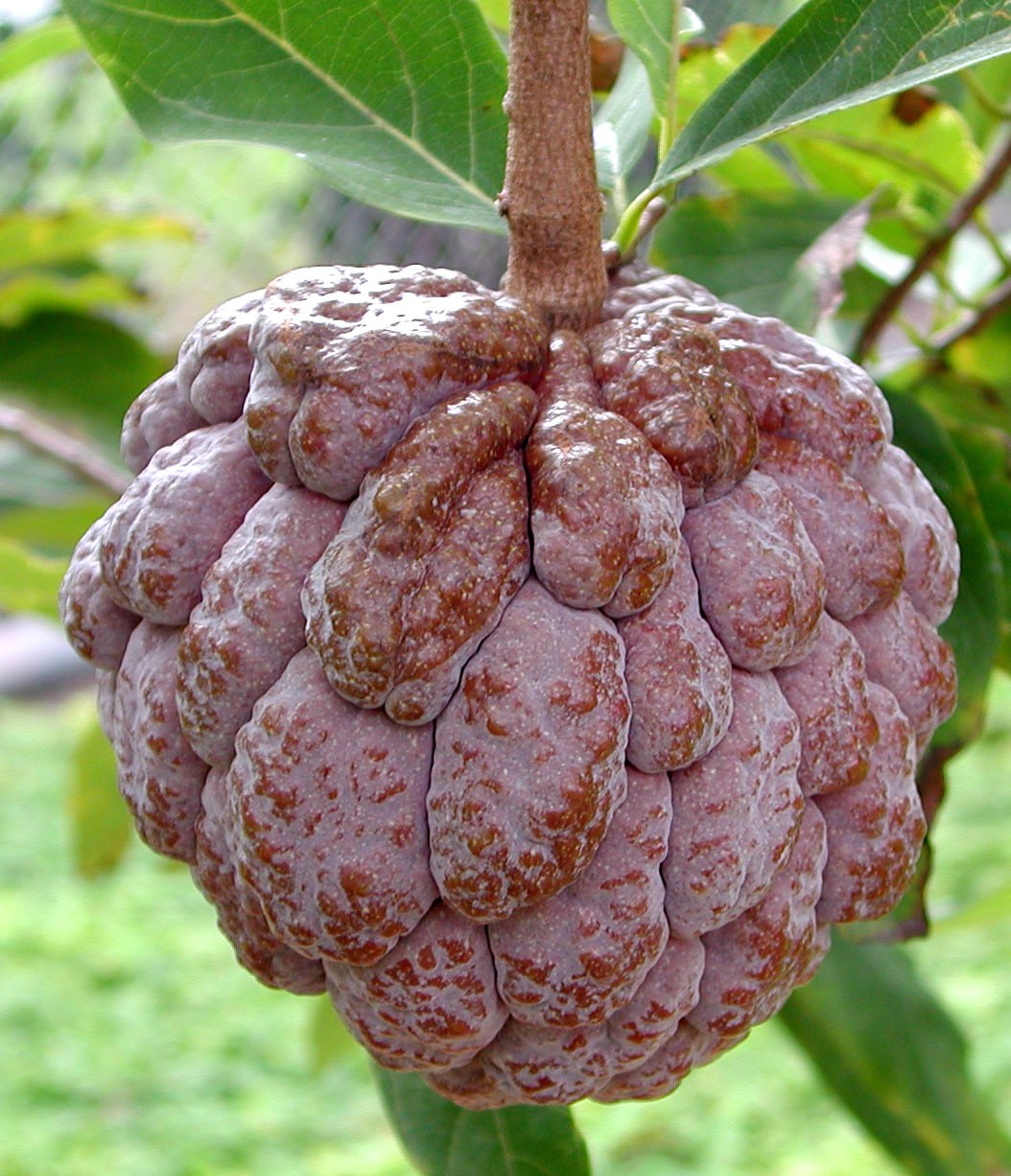
Annona squamosa - Sugar apple, Red fruit Kampong Mauve
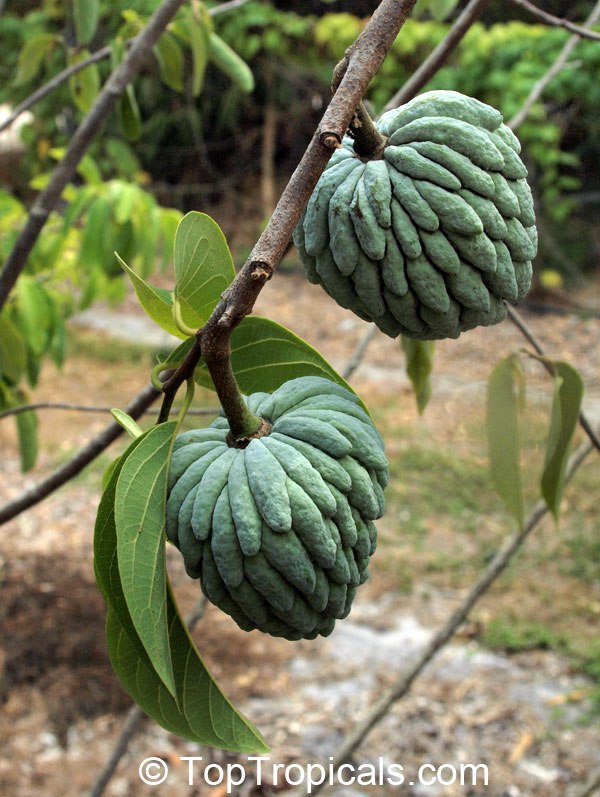
Annona squamosa - Sugar apple, Green fruit Thai Lessard
Annona squamosa - Sugar apple - is considered by many as the most delicious tropical fruit. We introduced the Annona trees earlier.
- ✳️ Very small, compact tree, perfect for container or small yard, see photos from our Tropical Fruit Tree contest Winner.
- ✳️ Starts fruiting within 3 year from seed!
- ✳️ Easy to grow and undemanding
- ✳️ The fruit is sheer deliciousness, pulp resembling custard.
🛒 Order Sugar Apple
#Food_Forest #Container_Garden
🏵 TopTropicals
How to grow your own Pepper plants

Piper sarmentosum - Vietnamese Pepper, Lalot leaves wraps

Piper nigrum - Black Pepper
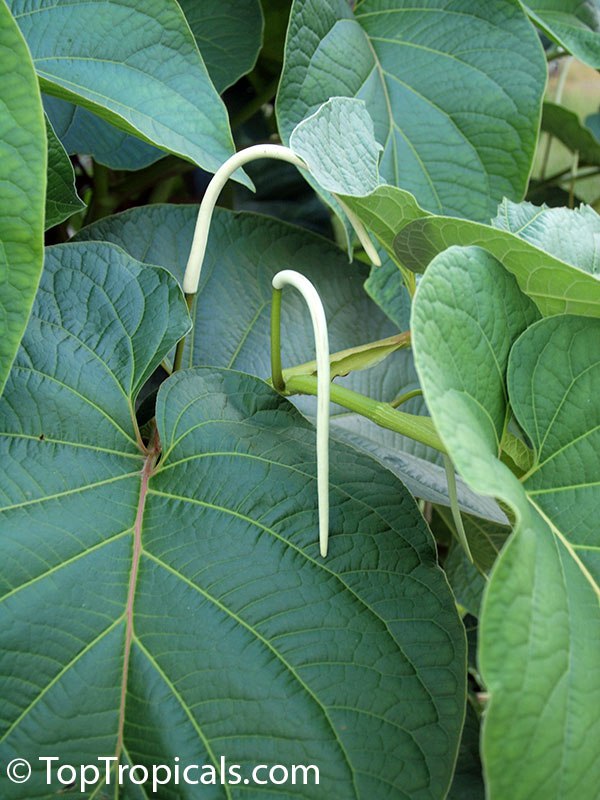
Piper auritum - Root Beer Plant, False Kava-Kava
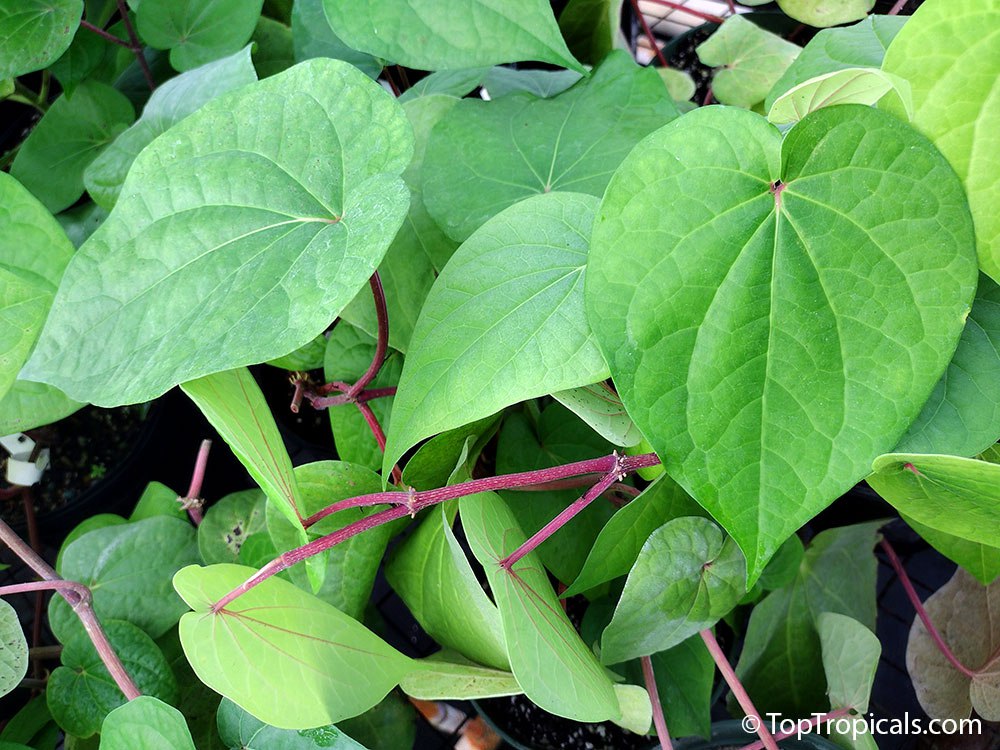
Piper betle - Betel leaf

Piper longum - Indian Long Pepper, Pippali, Bengal Peppe
ℹ️ Leafy Pepper plants - Pipers - are a source of black pepper and many other "peppery" flavors. These plants come from the Piperaceae family and are used as a spice for their pungent, peppery flavor. Don't confuse them with with Capsicum peppers, such as bell and chili peppers.
- 🔻
Learn more:
📚 Vietnamese Pepper - Lalot food wraps BBQ recipe
🎥 Growing Lalot Pepper
🛒 Shop pepper plants: Pipers
#Food_Forest #Recipes #Container_Garden #How_to
🔴 Join 👉 TopTropicals
Where does Vanilla come from? How to grow your own Vanilla Beans

Vanilla planifolia - Bourbon Vanilla Bean Orchid beans, seeds
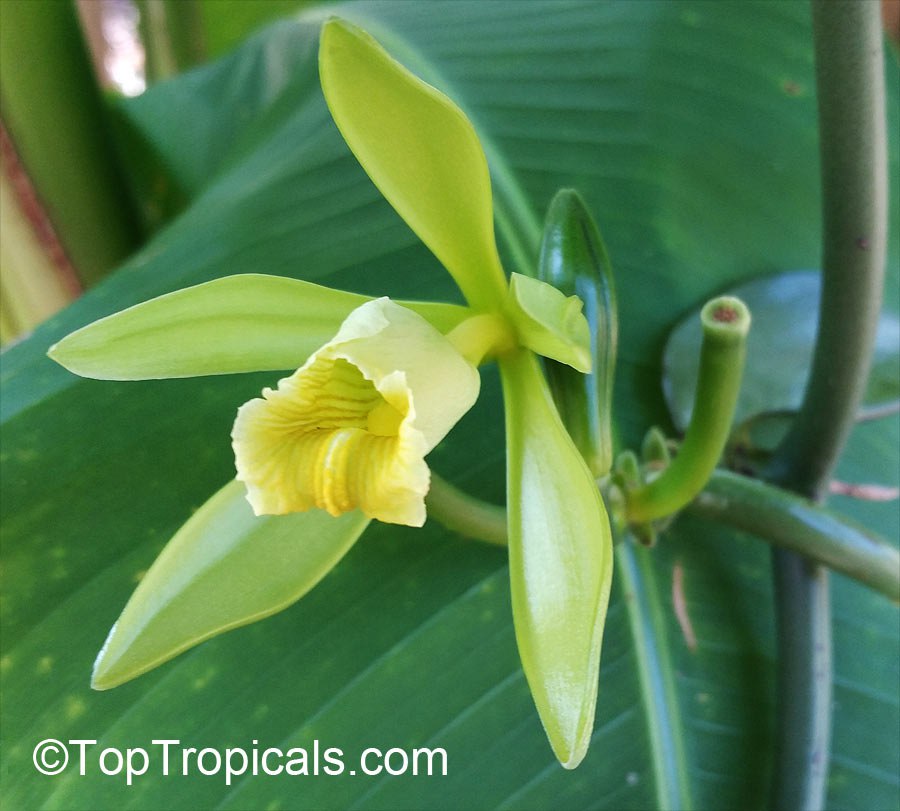
Vanilla planifolia - Bourbon Vanilla Bean Orchid flower
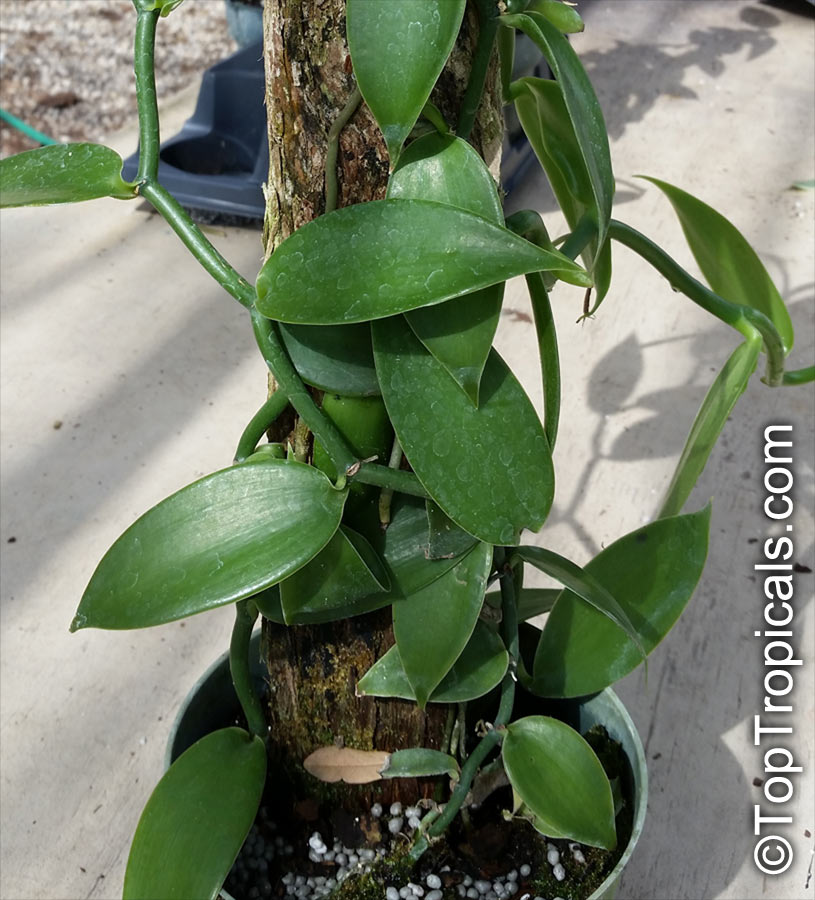
Vanilla planifolia - Bourbon Vanilla Bean Orchid
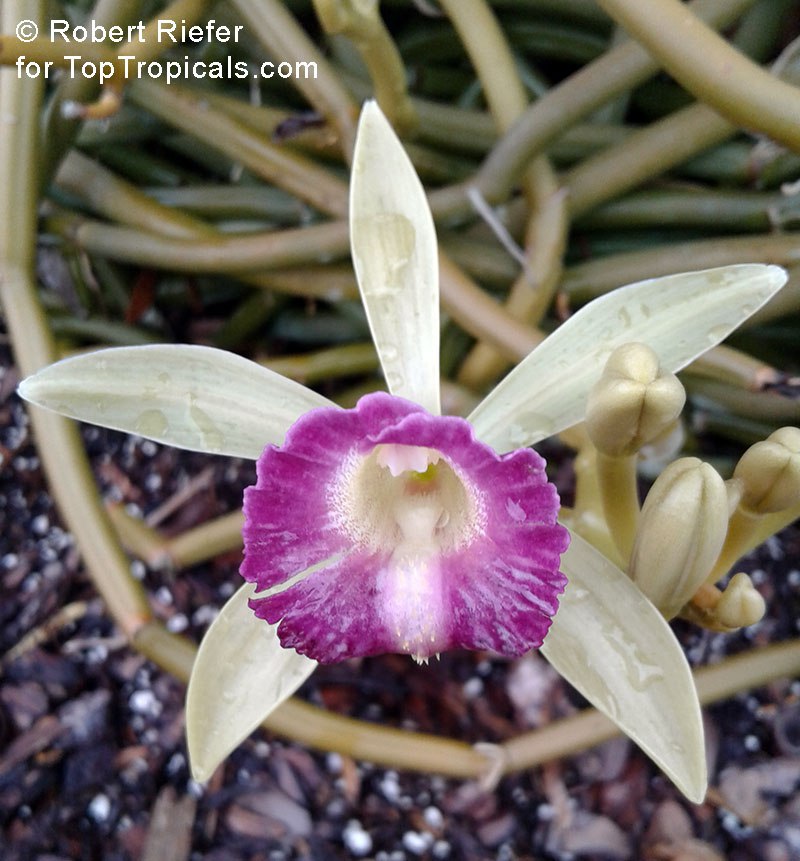
Vanilla dilloniana - Leafless Vanilla Orchid, flower
- ❣️ Vanilla spice comes from
Vanilla Orchid! - ❣️ Vanilla planifolia is a leafy climbing orchid from hot, wet tropical America. It is grown for its pods which, when dried, become the commercial vanilla.
- ❣️ The flowers are hand pollinated.
- ❣️ The Aztec Indians in Mexico used Vanilla Pods to flavor their chocolate drink 'Xoco-latl'. Vanilla was believed to be a tonic for the brain.
- ❣️ Vanilla Pods are picked green when they have no scent. The lengthy curing process, which develops fragrant aroma, is one reason for its high cost.
- ❣️ Vanilla orchid needs a flat, solid, porous support for climbing and in order to flower and produce seed pods. It can be grown over a log or a board (make sure the support wood is not chemically treated), or climb over a tree.
- ❣️ If really happy, Vanilla orchid can exceed 100 feet in length in just a few years. The plants flower only when mature, which takes a few years. It only flowers when it gets strongly attached to a support with its aerial roots.
- ❣️Vanilla orchid can be grown indoors as a house plant. Culture is similar to traditional orchids, however, it will need a support or trellis. Just keep in mind that for Vanilla Bean production, Vanilla Orchid must attach to a porous surface (like a wood log).
Learn more:
📚 Vanilla - The Most Versatile Orchid
🎥 How to produce my own vanilla: secrets of Vanilla pollination
Vanilla dillioniana - The Biggest Vanilla Orchid in 100 Gal Pot
🛒 Shop vanilla orchids
#Food_Forest #Remedies #Container_Garden
. . . . . . . . . . . . . . . . . . . . . . . .
🔴 Join 👉 TopTropicals
. . . . . . . . . . . . . . . . . . . . . . . .
Would you like to spice Up Your Garden with Variegated Ginger?
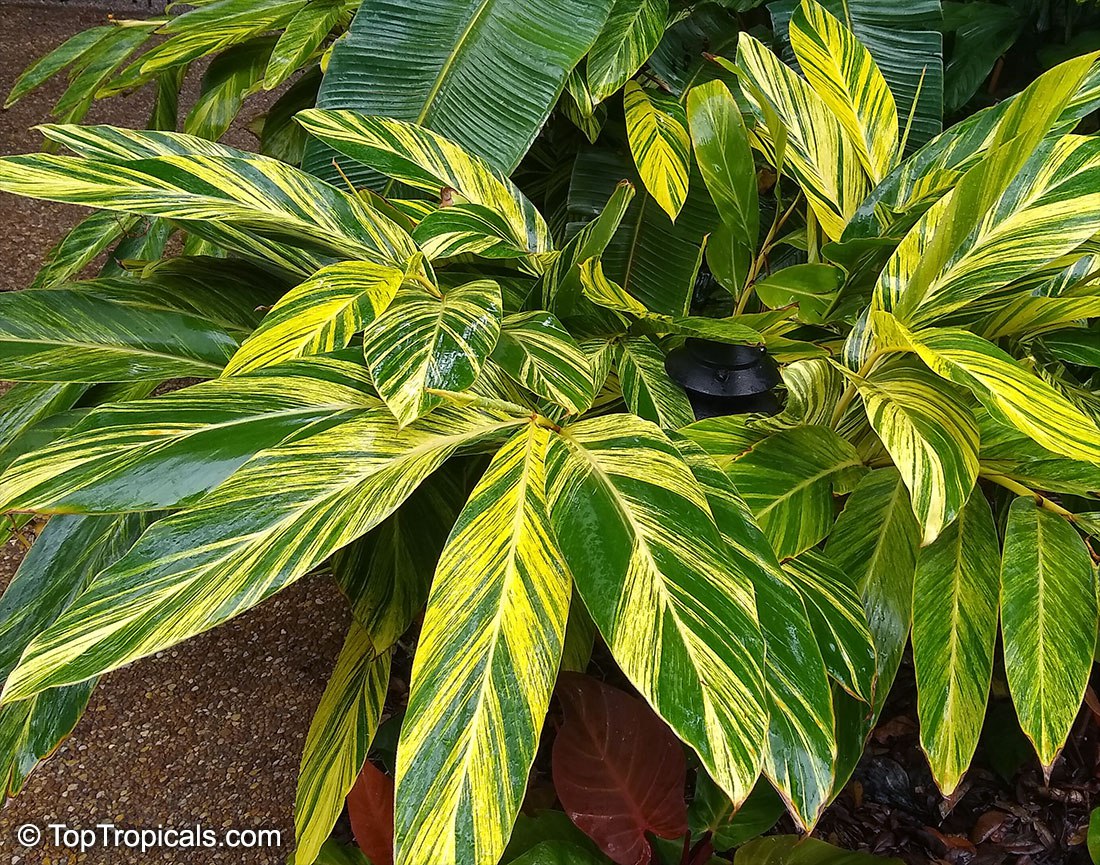
Alpinia Zerumbet Variegata Variegated Ginger
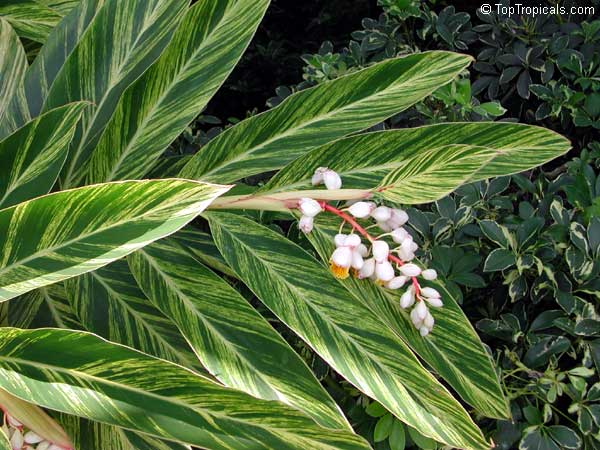
Alpinia Zerumbet Variegata Variegated Ginger
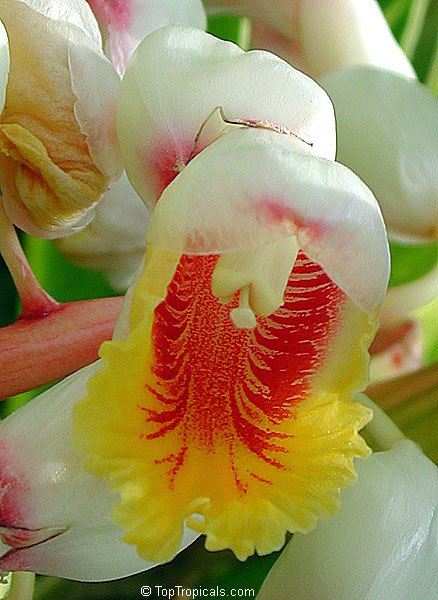
Alpinia Zerumbet Variegata Variegated Ginger flower
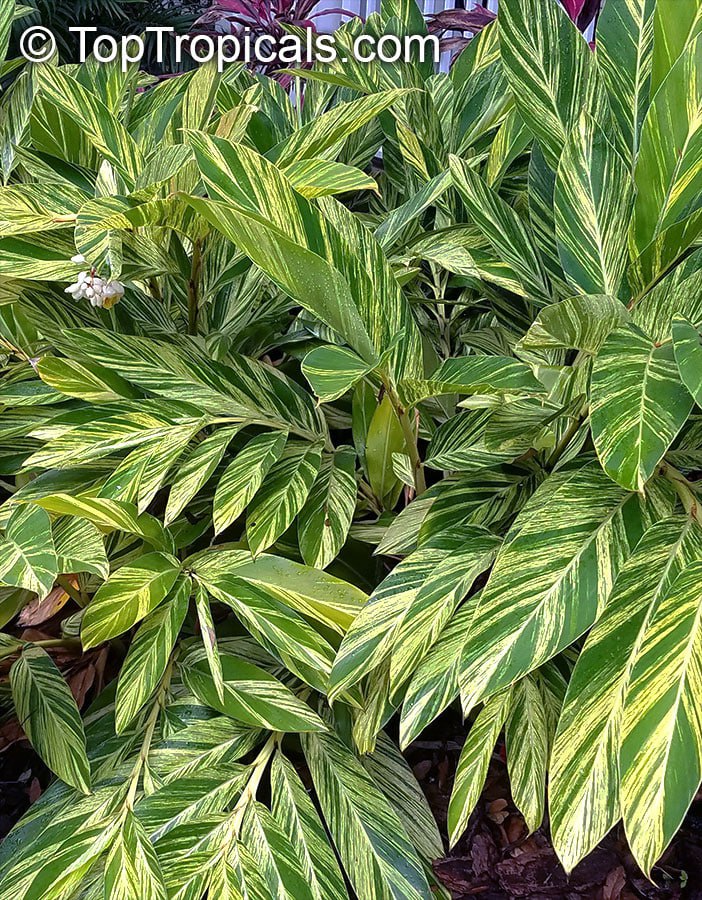
Alpinia Zerumbet Variegata Variegated Ginger

Alpinia Zerumbet Variegata Variegated Ginger
- 🌿 Alpinia Zerumbet Variegata is a clumping ginger valued for its beautiful variegated foliage. With its colorful foliage and beautiful flowers, variegated ginger is a stunning ornamental.
- 🌿 Striking Foliage: Glossy green leaves with white striping add a pop of color and interest to your garden.
- 🌿 Unique Flowers: Unlike other gingers, its beautiful, fragrant, shell-like flowers droop from leafy stems, adding summer charm.
- 🌿 Perfect Size: This small shrub grows 2-4 feet tall and can be pruned for size control.
- 🌿 Moisture Lover: Keep the soil moist for happy, thriving plants.
- 🌿 Ideal Conditions: Thrives in shaded garden corners with organically rich, well-drained soil. Mulch for best results.
- 🌿 Low Maintenance: No serious insect or disease problems, making it an easy addition to your garden.
- 🌿 Indoor Option: Can be grown as a houseplant with bright light and humid conditions, reaching 3-4 feet indoors.
- 🌿 Edibe: Like every ginger, this ornamental beauty also has edible rhizomes.
🛒 Shop Vriegated Ginger
#Shade_Garden #Container_Garden #Food_Forest
🏵 TopTropicals
Craving a Mojito? Beat the Summer heat with Mojito Elephant Ears!
Colocasia sculenta Mojito, a spectacular variety of Elephant Ears, is a must for a rare plant collection:
- 🐘 Striking variegation: bold, mottled leaves in shades of green and dark purple, reminiscent of a refreshing mojito!
- 🐘 Large, impressive leaves: massive, heart-shaped leaves that create a dramatic and tropical look.
- 🐘Versatile: thrives in both sun and partial shade, making it adaptable to various garden locations.
- 🐘 Water-loving: ideal for bog gardens, ponds, or as a stunning addition to water features.
- 🐘 Container friendly: perfect for pots and containers, allowing you to bring its tropical charm to patios and balconies.
- 🐘 Fast growing: quickly establishes, providing lush foliage and rapid visual impact.
- 🐘 Low maintenance: minimal care once planted, making it a great choice for both beginner and experienced gardeners.
- 🐘 Heat and cold tolerant: performs well in warm climates. During cool winters, leaves may die back and regrow in Spring.
- 🐘 Edible tubers: produces edible corms (roots) that are a staple in many cuisines, adding a functional aspect to its beauty.
- 🐘 Unique garden accent: an eye-catching focal point or accent plant.
🛒 Get some Mojito for your garden
#Nature_Wonders #Food_Forest #Container_Garden #Shade_Garden
🏵 TopTropicals
Can you eat bird-looking flowers? You can eat the whole tree!
Sesbania grandiflora - Hummingbird Tree
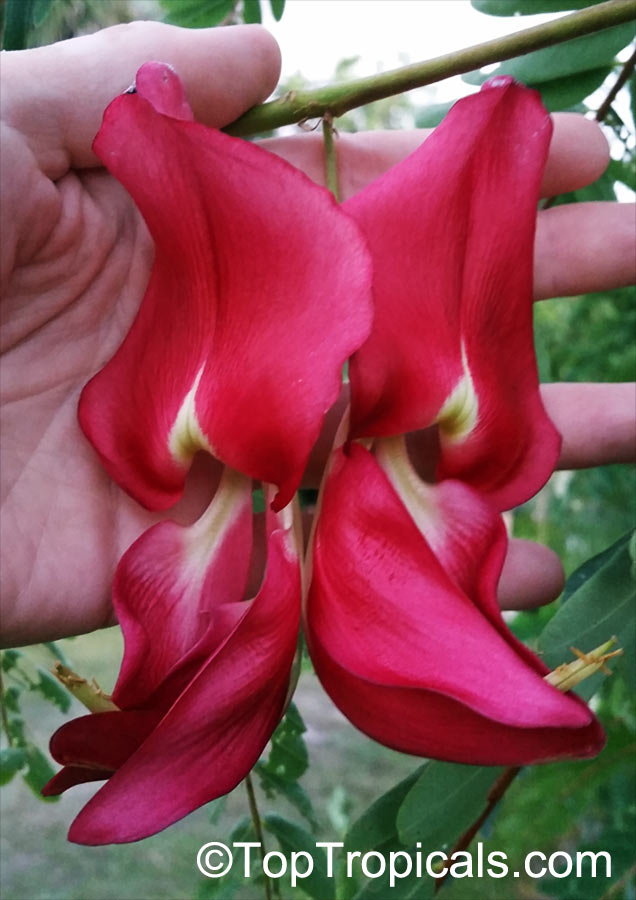
Sesbania grandiflora - Hummingbird Tree Red flower
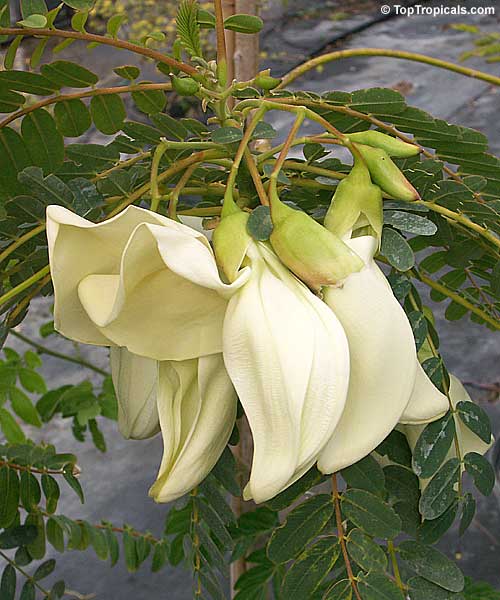
Sesbania grandiflora - Hummingbird Tree White flower
- 🐧 Sesbania grandiflora - Hummingbird Tree - is named for its flowers resembling little birds.
- 🐧 It produces a mass of large, 3-4", curved flowers from November to June. Flowers can be coral red or white.
- 🐧 The fun part is - the flowers are edible! As well as the rest of the plant: tender leaves, green fruit (bean pods), and flowers, used in curries, salads, or fried in batter.
- 🐧 Medicinal uses: bark, leaves, gums, and flowers have medicinal properties.
- 🐧 Lower branches form a beautiful floral canopy. It is a fast growing, but a small tree that will fit any yard. Great everblooming tree for container culture.
🛒 Get an edible Hummingbird Tree
#Food_Forest #Remedies #Butterfly_Plants #Container_Garden #Fun_Facts
🏵 TopTropicals
Who wants a cold hardy, dramatic looking tropical fruit tree with a sweet fruit? Or, who doesnt?
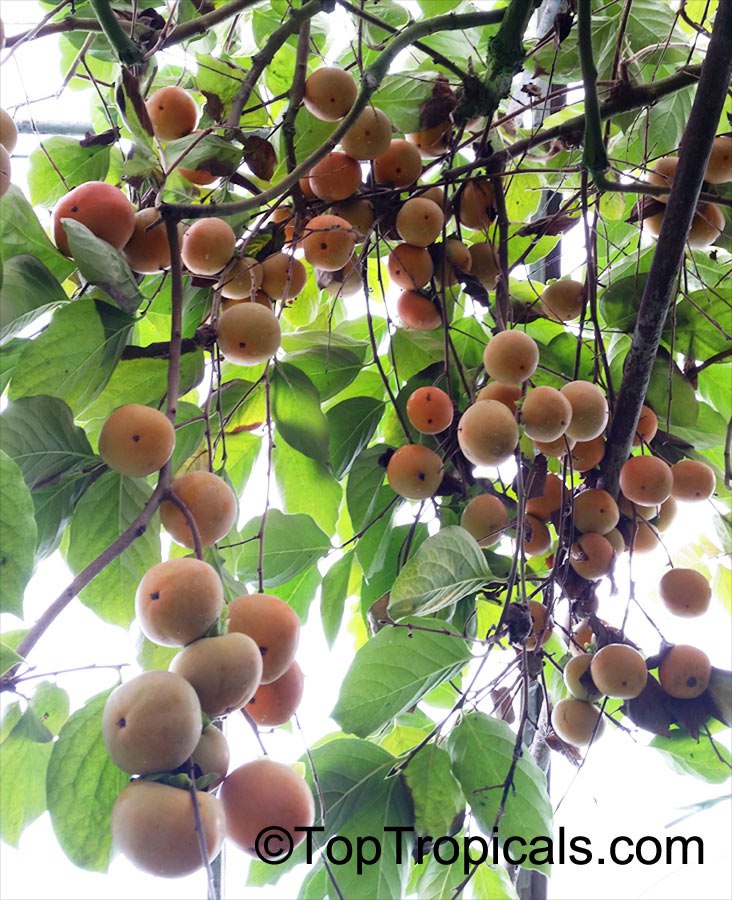
Persimmon (Diospyros sp.)

Persimmon (Diospyros sp.)
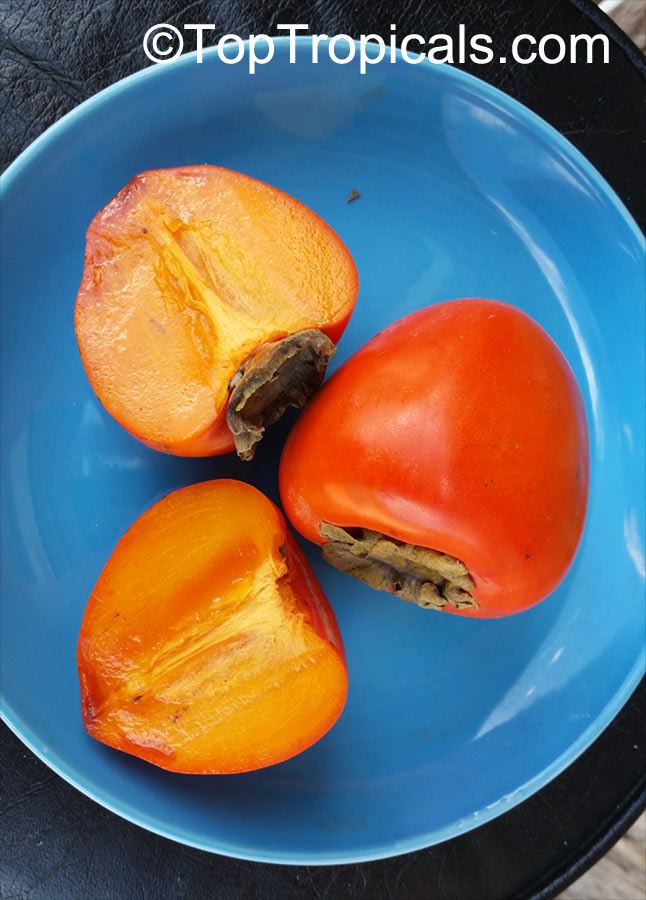
Persimmon (Diospyros sp.)

Persimmon (Diospyros sp.)

Persimmon (Diospyros sp.)
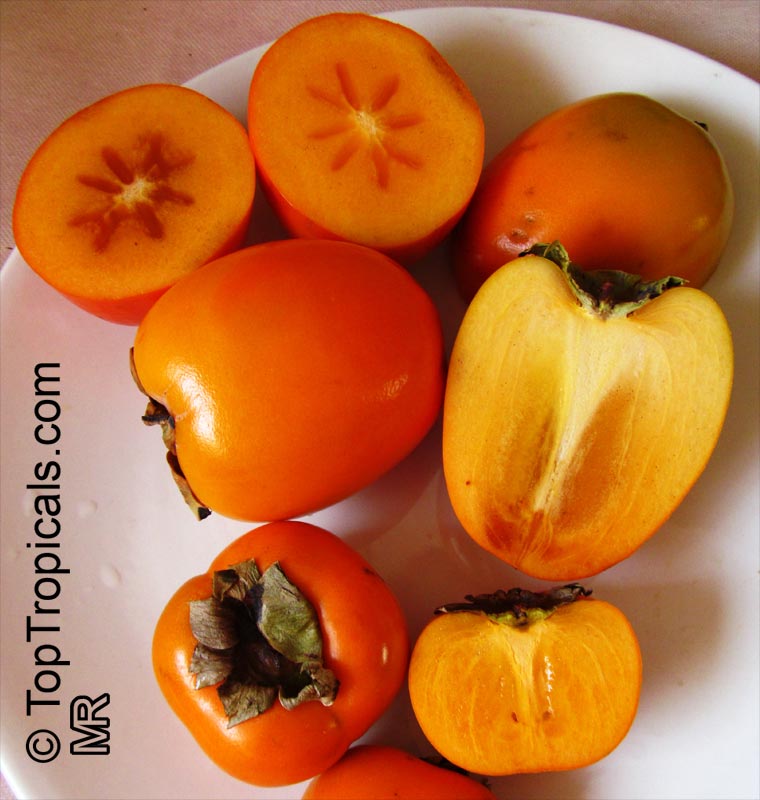
Persimmon (Diospyros sp.)
- 🍑 Persimmon (Diospyros sp.) is a graceful, small, subtropical fruit tree from China, with multitrunked or single-stemmed structure and drooping leaves and branches, turning dramatic shades in autumn.
- 🍑 People love Persimmon fruit for its sweet and unique flavor, often described as a blend of honey and apricot.
- 🍑 The tree thrives in deep, well-drained loam soil, tolerating alkaline conditions.
- 🍑 The fruit classified into astringent (soft, sweeter pulp) and non-astringent (crunchy) cultivars.
- 🍑 Best Varieties for Container Culture:
- 🍑 Hardy to USDA zones 7-10, may need protection in colder regions.
Non-Astringent: Fuyu, Giant Fuyu, Matsumoto-Wase, Jiro, Maekawa, Izu.
Astringent: Chocolate, Guang Yang, Hachiya, Meader, Saijo, Tanenashi, Winterset.
📚 How to grow Persimmon tree
🛒Order Persimmon Tree
#Food_Forest #Container_Garden
🏵 TopTropicals
What was discovered in the Pyramids: Pigeon Pea - an Ancient Superfood
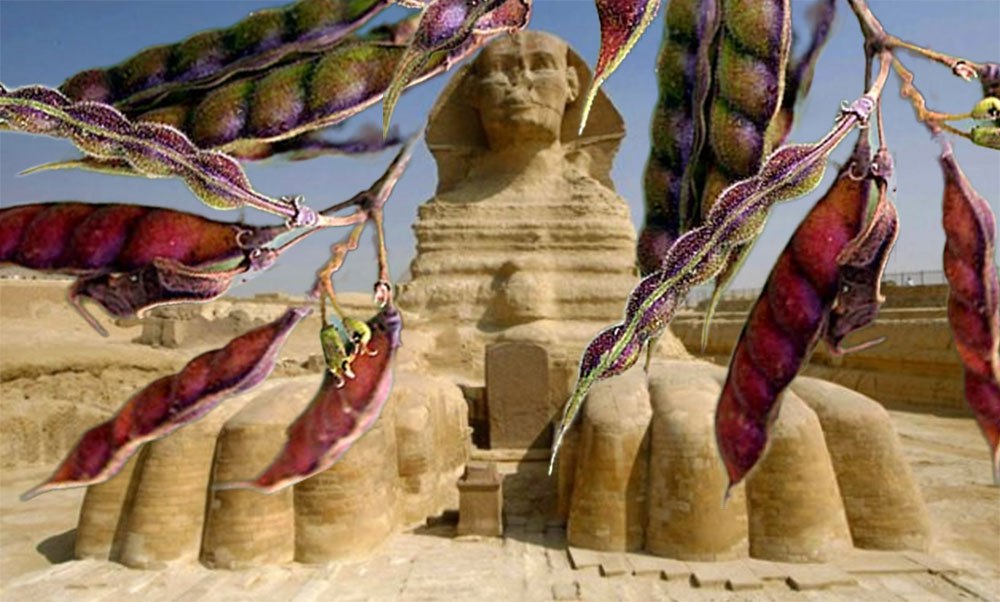
Cajanus cajan - Pigeon Pea and Egyptian pyramids
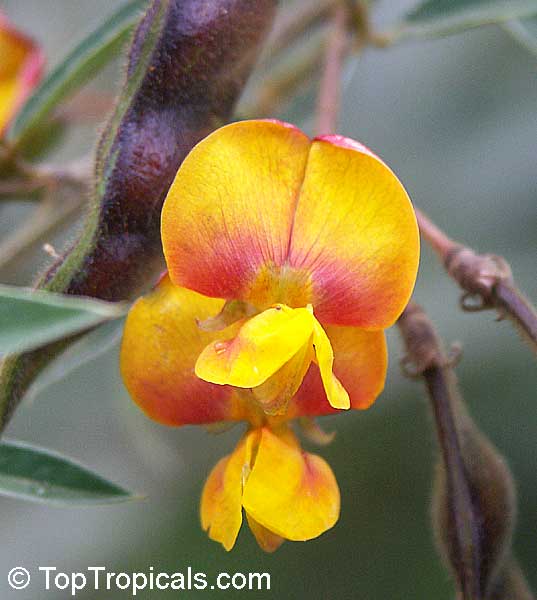
Cajanus cajan - Pigeon Pea
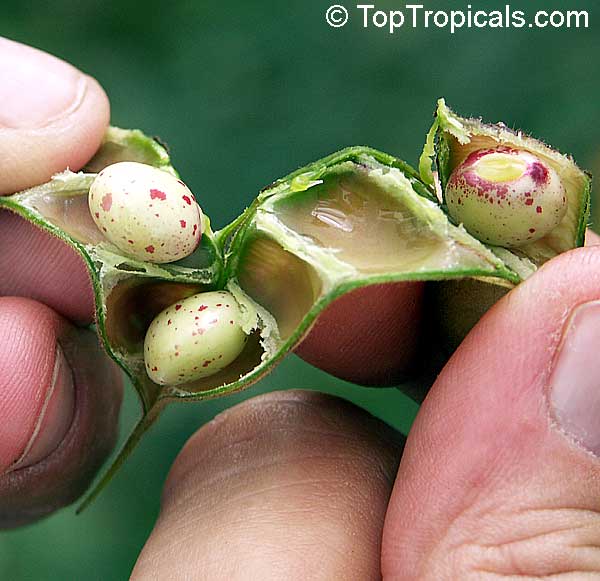
Cajanus cajan - Pigeon Pea
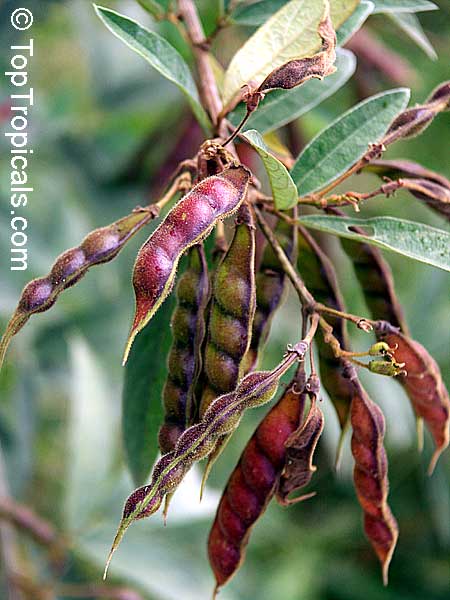
Cajanus cajan - Pigeon Pea
- Cajanus cajan - Pigeon Pea - existed for more than 4800 year! It's been widely consumed in South Asia, South East Asia, Africa, and Latin America. Documented in India since 2,800 BC; reached Ancient Egypt around 2,200 BC.
- Provides flavorful, nutritious, and healthy food, with potential to become widely popular like Japanese sushi 🍱
- It is a showy perennial woody shrub or small tree, 4-8 ft tall, with soft leaves. Can be grown in container
- Pretty flowers are yellow, with purple or red streaks, pods containing oval to round seeds.
- Many culinary uses: the tasty and healthy beans used in rice dishes, soups, stews, tempeh, tofu. Unripe pods eaten in curries, leaves and young shoots cooked as a vegetable.
- Rich source of fiber, protein, vitamins (B, C, E, K), and minerals (calcium, iron, magnesium, manganese, phosphorus, potassium, zinc).
- Medicinal value: various folk medicinal uses for sores, bladderstones, jaundice, skin irritations, bronchitis, coughs, pneumonia, toothache, dysentery, and more.
- Everyone can grow it! The plant is super easy, tolerates poor soils, drought tolerant, improves soil quality like many other beans.
📚 Learn more about Pigeon Pea
🛒Grow your own Pigeon Pea Superfood
#Food_Forest #Remedies #Container_Garden #Fun_Facts
🏵 TopTropicals
